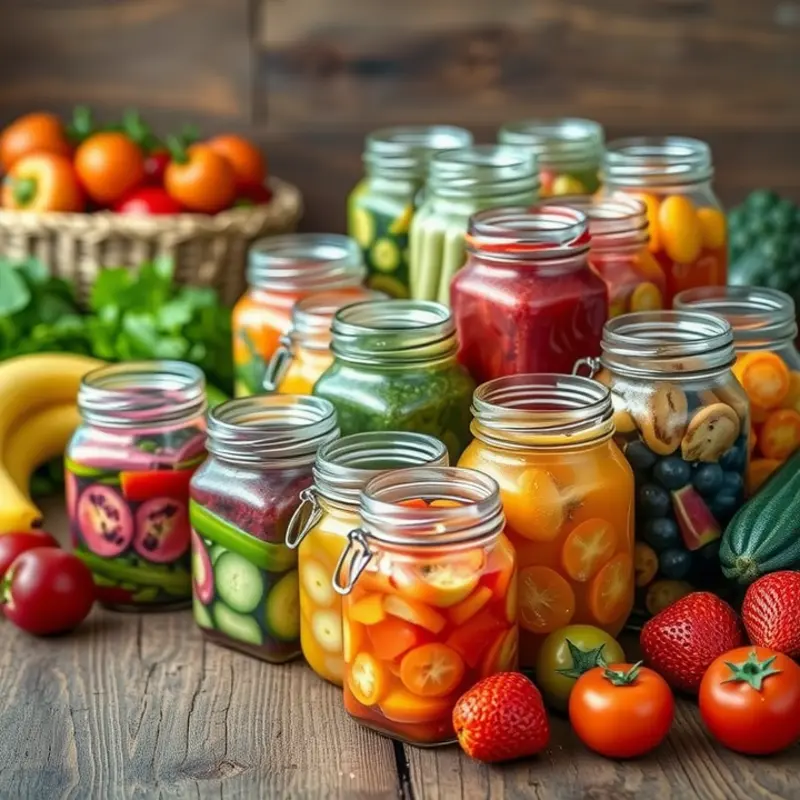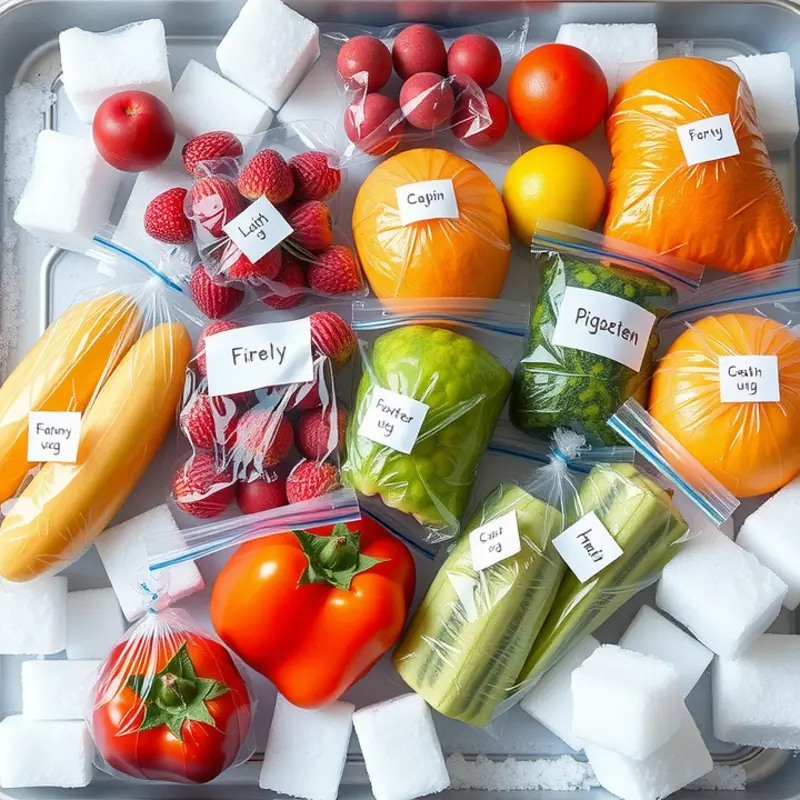Food preservation is not just a trend; it’s a vital skill for home cooks looking to extend the shelf life of ingredients and enhance flavors. Whether you’re trying to make the most out of seasonal produce or save leftovers, learning simple preservation techniques can elevate your kitchen game. From canning and freezing to drying and fermenting, mastering these methods allows you to create a well-stocked pantry filled with delicious, homemade goods.
Canning: Seal in the Freshness

Canning preserves the vibrant flavors of your favorite fruits and vegetables, allowing you to savor them throughout the year. By applying heat to sealed jars, you eliminate bacteria and create a vacuum that prevents spoilage. Following this process ensures a safe and flavorful pantry stocked with your own creations.
Begin by gathering the essential tools: glass jars, lids with bands, a large pot or pressure canner, a jar lifter, a funnel, and a ladle. Each item plays a crucial role in the canning process. Make sure everything is clean and sanitized to avoid contamination.
Before diving into canning, select the freshest produce available. Wash fruits and vegetables thoroughly, removing any dirt or debris. For many recipes, peeling or chopping your ingredients is necessary. Blanching – briefly boiling your produce before cooling it in ice water – can enhance color and texture, especially for vegetables.
For jams or preserves, proper preparation includes macerating fruit with sugar, which draws out juices and enhances flavor. Use recipes from trusted resources to balance acidity and ensure safety. High-acid foods typically use water bath canning, while low-acid foods require pressure canning for safety.
In water bath canning, fill a large pot with water and bring it to a rolling boil. Submerge filled jars with your prepared ingredients, ensuring they are covered by at least an inch of water. The boiling time varies based on the recipe and altitude, so follow specified guidelines carefully. This method is ideal for fruits, pickles, and tomato products.
Pressure canning, on the other hand, is crucial for preserving vegetables, meats, and other low-acid foods. This technique requires a specialized canner built to withstand high pressure. Follow your pressure canner’s manual meticulously, as maintaining the correct pressure is vital for eliminating potential pathogens like botulism.
Regardless of the method, use the funnel to fill jars, leaving the recommended headspace to allow for expansion. Remove air bubbles with a non-metallic utensil, clean the jar rims, and adjust the lids. Tighten the bands, but avoid overtightening which could affect the sealing process.
Processing times completed, remove the jars carefully using the jar lifter. Place them on a towel to cool, leaving space between each jar. Cooling might take up to 24 hours. As they cool, you’ll hear the rewarding sound of jar lids popping, signaling that a vacuum seal has formed. Once cooled, press the center of each lid to ensure it’s sealed tightly.
Label each jar with its contents and date, and store it in a cool, dark place. For inspiration on using your preserves, consider a dish like this Mediterranean chickpea salad that could pair well with a variety of canned vegetables.
By mastering canning, you gain control over ingredients, flavors, and food quality. This skill transforms seasonal abundance into year-round delights, providing not only nourishment but also the satisfaction of a kitchen well-prepared.
Freezing: A Simple Way to Preserve Taste

Freezing is a straightforward technique to ensure fruits, vegetables, and even prepared meals retain their freshness and flavor. The beauty of freezing lies in its accessibility and the minimal effort required for a significant payoff in convenience and taste throughout the year.
To begin with, understanding the method of blanching is crucial. Blanching involves briefly immersing vegetables in boiling water followed by an immediate plunge into an ice bath. This process halts enzyme actions, which can cause loss of flavor, color, and texture. For instance, when you blanch green beans, they maintain a vibrant green color and snap-like freshness upon thawing. It’s important to note that not all vegetables require blanching before freezing, but those that do enjoy the benefits of extended shelf life and preserved taste.
Packing methods play an equally important role. Fruits like berries or sliced bananas benefit from a technique called flash freezing. Lay them out in a single layer on a baking sheet, freeze until solid, and then transfer to containers or bags. This method prevents clumping, allowing you to remove only the portion needed. For other foods like soups and stews, consider portioning them into freezer-safe containers or resealable bags. Laying bags flat while freezing not only saves space but also reduces thawing time.
Proper storage is key to maintaining quality. Use packaging that is moisture-vapor resistant to avoid freezer burn, which can degrade texture and taste. Removing as much air as possible is imperative to prevent ice crystals from forming, which not only affects the structure but also the overall enjoyment of your ingredients when thawed.
Thawing is the final step where the success of your freezing efforts can be truly appreciated. For fruits and herbs, thawing at room temperature or overnight in the refrigerator will retain the most flavor and texture. Vegetables, particularly those used in cooked dishes, can often go straight from the freezer to the pan or oven, making them a convenient option for quick meals.
Meals, such as a creamy garlic butter chicken dish, can be reheated slowly to preserve the creamy texture and rich taste. If you enjoy low-carb options, consider pairing such frozen meals with fresh components like zucchini noodles with avocado pesto, which you can explore further here.
Through these freezing strategies, reducing food waste becomes manageable while ensuring that you always have access to seasonal flavors. By leveraging these techniques, you can enjoy the best of your ingredients throughout the year, empowering you to create delicious meals at any time.
Final words
Food preservation is an empowering skill that can enrich your culinary adventures and help you minimize food waste. By incorporating techniques like canning and freezing into your kitchen repertoire, you can enjoy seasonal flavors year-round while ensuring that your ingredients maintain their quality. Remember, practice makes perfect; start small and gradually expand your preservation efforts as you gain confidence. Soon enough, you’ll be able to savor the delicious fruits of your labor throughout the year, enhancing your meals and creating a more sustainable kitchen environment.







